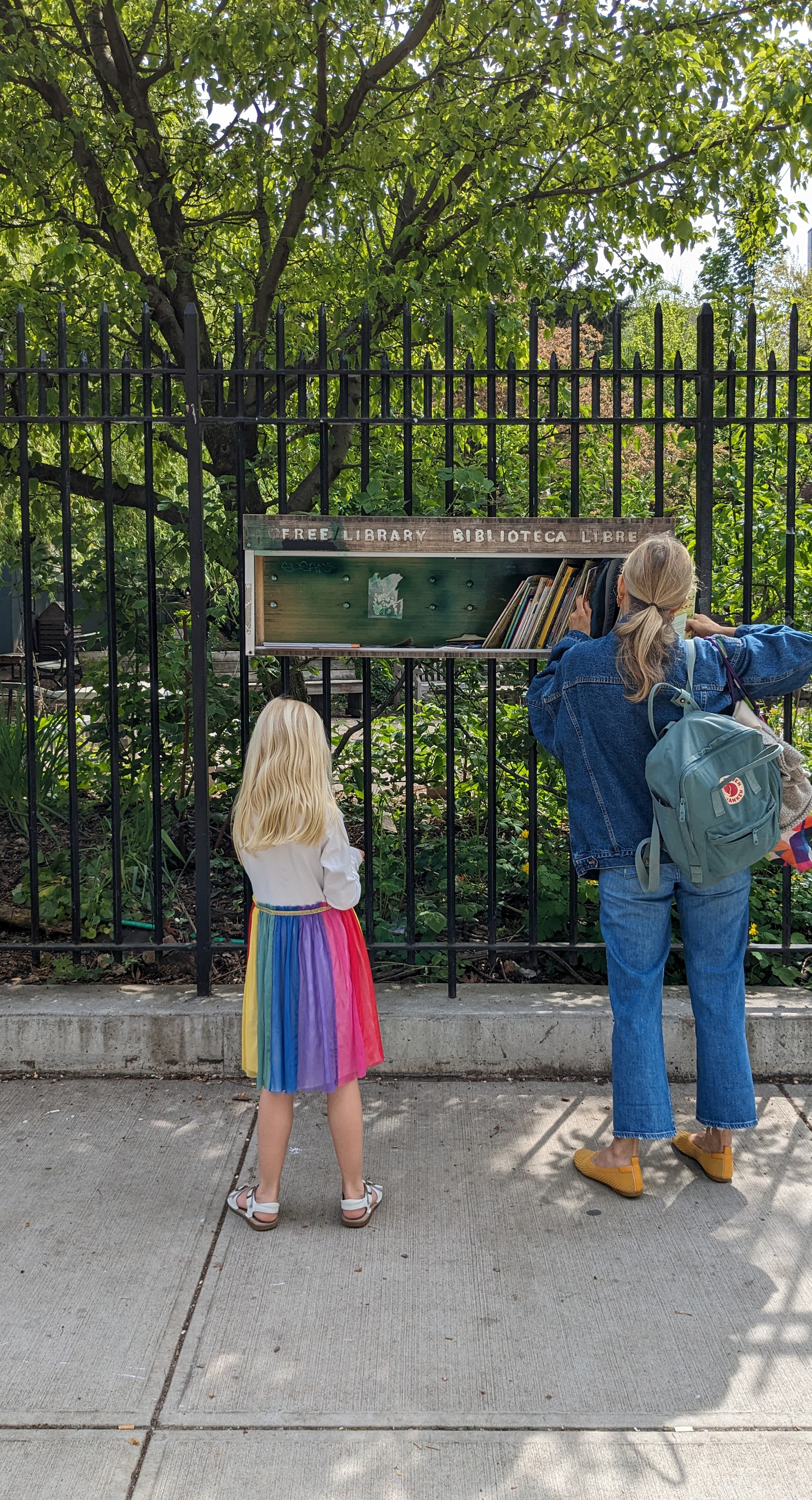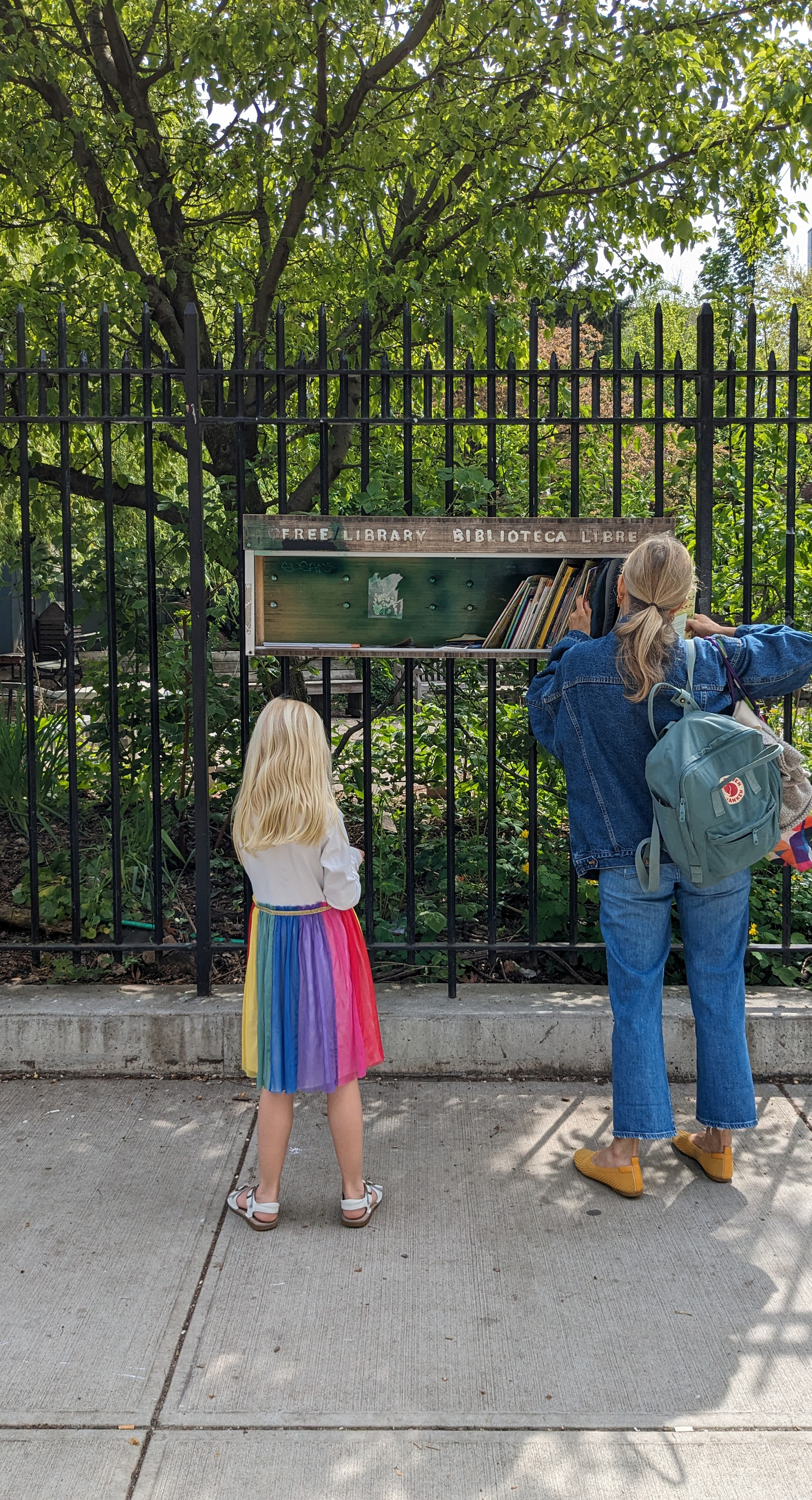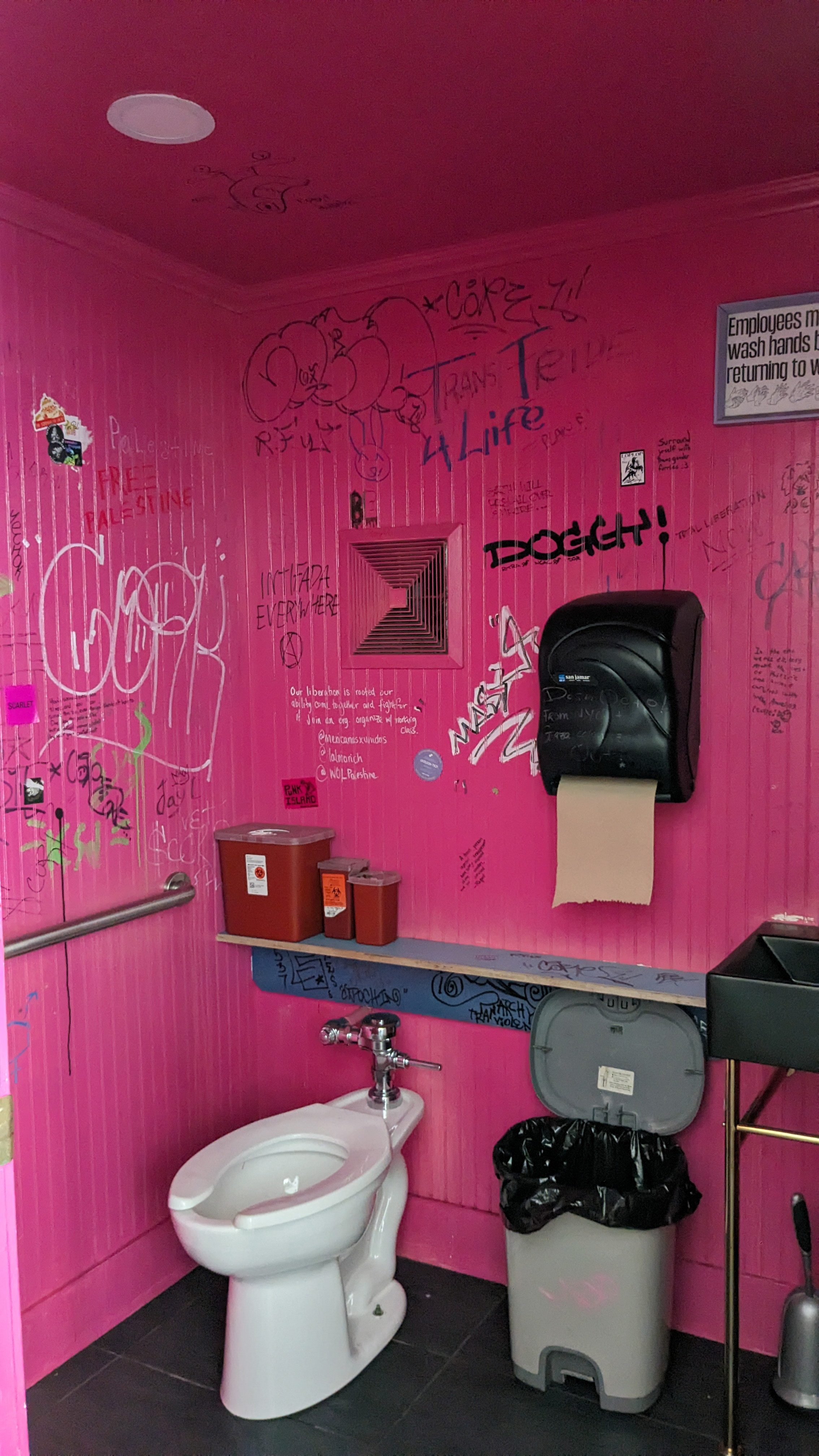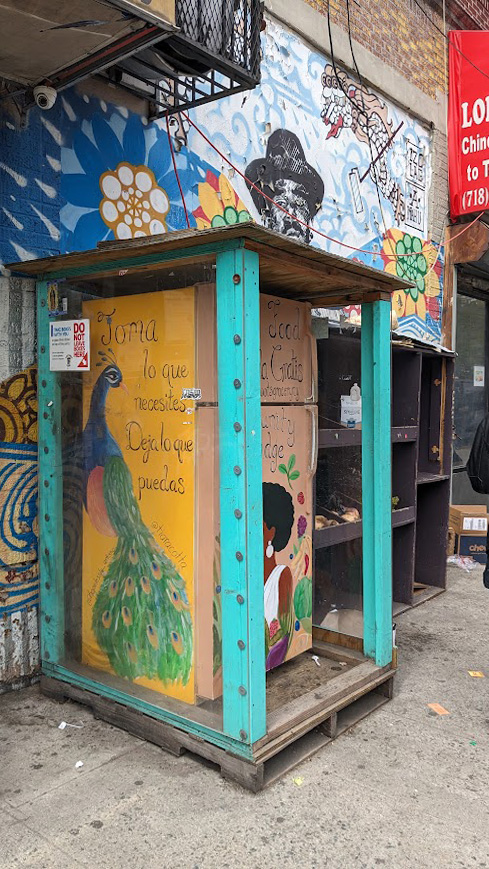Instances of commoning in New York; or else a toilet, a fridge, and a shelf
Posted on 14-05-2024
A few days ago, I had the privilege of presenting my study titled "Commoning for social sustainability: exploring the role of institutionally aided practices in the neighborhoods of Lisbon" at the Conference of Urban Affairs in New York. This small section of my PhD research co-authored with my supervisor Dr. Alexandra Paio, delved into pressing questions surrounding commoning processes in disadvantaged neighborhoods. Can these processes thrive through progressive institutional instruments? What is their nature and dynamics, and how do they eventually bolster social sustainability?
The session I presented in was nothing short of invigorating, filled with insightful questions and thought-provoking discussions. I'm especially grateful for the inclusive environment fostered with sign language and sound interpreters, ensuring accessibility for all present attendees.
Likewise, the conference exceeded my expectations in its organisation and contextual richness. In approximately 250 sessions, thousands of international researchers and practitioners offered a wealth of knowledge on various manifestations of pressing issues in urban space and housing discourses, such as commodification, gentrification and displacement, activism and social infrastructure, top-down visions and progressive policies, in diverse contexts of the US, Latin America, Asia, the Global South and Europe.
It was inspiring to witness the diverse perspectives and groundbreaking research shared by peers globally, while the highlight of my experience was connecting with old and new friends, with whom I look forward to staying connected and following their work in the field.
After the conference I spent (my fortune for) some extra days conducting research and visiting sites to gain firsthand experience of the particularities of the neighbourhoods of New York. I was especially lucky that my last days there coincided with the annual Jane Jacobs Walks Festival, during which I was able to participate in several guided tours on multiple neighbourhoods and streets.
I could write a book about the mixed feelings triggered by the contradictions of New York: the impressive but tourist-filled High Line contrasting with homeless people sleeping underneath it or in adjacent metro stations; the photogenic skyline contrasting with the terrifying populations of rats searching for food in exposed piles of restaurant garbage on the sidewalks at night; the great views from amazingly redeveloped waterfronts, which have caused displacement and gentrification in once working class and immigrant neighbourhoods; the ‘alternative vibe’ of neighbourhoods outside the Manhattan, such as Brooklyn, Harlem and the Bronx, contrasting with stories of people long suffering from rent rises and displacement; and so on…
Notwithstanding these and many more contradictions, I tried to approach the city through the writings of fundamental scholars for my architectural background, such as Jane Jacobs, Whilliam Whyte and Fred Kent. Thus, linking back to my research interests I will devote the rest of this post on my search of instances of commoning in the city and among them, on three small elements: a toilet, a fridge and a shelf.
A toilet…
..or more specifically the toilet of the Bluestockings Cooperative, which is a “collectively-run activist center, community space and feminist bookstore that offers mutual aid, harm reduction support, non-judgemental resource research and a warming/cooling place that is radically inclusive of all genders, cultures, expansive sexualities and identities”.[1] Based on the Lower East Side of Manhattan, Bluestockings has been operating as a worker cooperative (meaning that it is owned and operated by its workers) for over 21 years, focusing on mutualism, care and volunteering. Its very active and challenging operation aims at empowering marginalised groups, though community organisation, education and skills building, and providing free resources and a space where everyone is welcome.
Among all the cooperative’s significant contributions to the local communities, what makes its toilet noteworthy is a seemingly simple decision to make it open to all. As I witnessed during my short stay in the space, the toilet is a haven for homeless people and marginalised groups who can cover this fundamental need with dignity and respect. As I was told, this decision, although within the legal tenant’s rights of the cooperative, has sometimes caused conflicts with the landlord and parts of the surrounding middle-class neighbourhood. In a period where it is not uncommon to have to pay for accessing toilets in private stores and public stations, -a measure that aims to exclude the very same groups of users that Bluestockings welcomes-, I find it takes great courage to truly keep one’s door open while facing the implications and stereotypes of attracting marginalised people.
A fridge…
.. that is placed outside the ‘Los Hermanitos Deli & Grocery’ in Brook Avenue in Bronx. The sign on the fridge invites passersby to take anything from inside it. As I was on my way to a guided tour, I didn’t have time stop and speak with the owners about it. However, although there is nothing novel about solidary offering of food to the ones in need in food pantries, food bags and soup kitchens, I found something particularly inviting in this case: its simplicity. The fridge is placed outside the store and is (according to the store’s opening information) accessible 24 hours a day, without anyone attending it or controlling it. This informality makes it particularly easy for people to stop by, open it and take what they need, without exposure, embarrassment, or stigmatisation. This simplicity can be especially emancipatory considering that poverty and food insecurity is increasingly becoming a next-door issue.
A shelf…
… mounted on the fence of ‘La Plaza Cultural de Armando Perez Community Garden’[2], which was founded in 1976 by residents and green activists. The garden is located in Lower East Side, an area highly populated by long-standing and locally defended community gardens. The shelf, placed at the exterior side of the fence to make it accessible even when the garden is closed, operates as book-sharing platform. During my short stay in the garden, I was impressed by the number of people leaving and taking books: some seemingly came specifically to take or leave books; some borrowed a book to read during their stay in the garden and returned it before leaving, some took a book while passing by. Right before leaving, I was also astonished to watch a man returning from his grocery shopping (judging by the shopping bags he was carrying), leave a fresh shield meal on the shelf and walkaway.
I am sure that in a city of 780km2 there are plenty of such community-led initiatives, as there are in other cities around the world. In the three examples, it is worth noticing the spatial decisions that were intentionally or unintentionally made to accommodate these caring and sharing platforms and the implications they carry about their users: placing the fridge outside instead of inside the store allows for an anonymised and unstigmatized way to provide care, respecting the sense of pride of individuals in need; similarly, placing the shelf outside the garden, in a position that is highly visible to not only the garden users but also the passersby, allows for a greater number of users and a function of the shelf as a sharing platform independent of the schedule and operation of the garden; conversely, inviting people, and importantly marginalised groups, inside the cooperative’s space to safely use a toilet to treat their basic needs with dignity, creates a shelter of inclusion and protection.
Closing, it is not in my intention to romanticise any of these initiatives, or present them as free from internal conflicts and controversies, nor promote them as a sufficient substitute for the lack of public service provision. In fact, these infrastructures may only treat symptoms rather than addressing the root problems of homelessness, food insecurity, addiction, illiteracy and poverty, which require institutional solutions. Yet, I cannot overlook how these humble and informal decisions embody moments of true solidarity, mutual support and sharing among communities to meet neighbours’ basic needs o with dignity and respect – and to this, I can only celebrate them.
----------------
[1] https://www.bluestockings.com/about-us/about-us
[2] https://www.opencity.com/laplazacultural/history/





